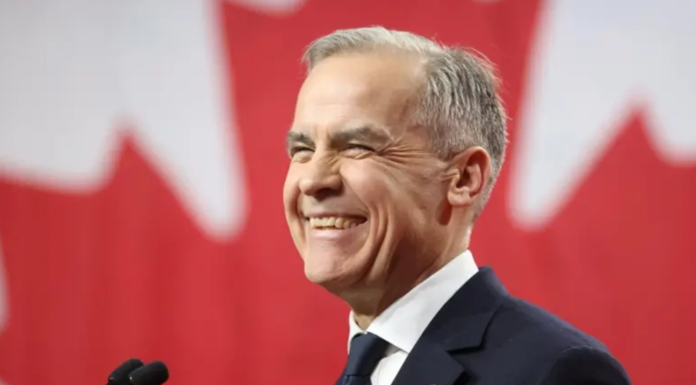In the early months of 2025, few would have predicted that Mark Carney, a former central banker with no elected political experience, would not only become Canada’s 24th prime minister but do so amid a constitutional and economic crisis of historic proportions. Carney’s rapid ascent and unexpected popularity were fueled not by a traditional political campaign, but by an adversary across the border: U.S. President Donald Trump.
From Finance to Politics
Mark Carney, born March 16, 1965, in Fort Smith, Northwest Territories, was best known for his leadership at the Bank of Canada from 2008 to 2013, and later at the Bank of England until 2020. His reputation as a steady hand during financial crises earned him international acclaim. However, when he was chosen by Canada’s Liberal Party in March 2025 to succeed Justin Trudeau, who resigned amid declining popularity, Carney faced skepticism about his ability to transition from technocrat to statesman.
His selection came as Canada was reeling from U.S. tariffs, skyrocketing inflation, and strained relations with its largest trading partner. Carney’s economic pedigree, coupled with a calm demeanor, made him an appealing figure in uncertain times. Within days of being sworn in on March 14, Carney called a snap election for April 28 to seek a public mandate.
The Trump Factor
What transformed Carney from caretaker leader to political force was U.S. President Donald Trump’s increasingly antagonistic rhetoric. Trump’s sudden proposal to annex Canada as the “51st state,” along with sweeping tariffs on Canadian goods, galvanized Canadian public opinion. Trump’s dismissive tone towards Canada and its leadership, including calling Carney’s visit to the White House unnecessary and branding Canada’s economy as weak, triggered a surge in nationalistic sentiment north of the border.
Rather than shrink from the provocation, Carney leaned into it. He delivered a series of sharp rebukes, declaring Canada “was not for sale” and promising retaliation for what he termed a “direct attack” on Canadian workers. His fiery rhetoric resonated with voters disillusioned by Trump’s heavy-handed trade policies and perceived disrespect.
Election Strategy and Victory
Carney’s campaign was a masterclass in crisis framing. He centered the election around a simple but potent narrative: defending Canadian sovereignty and economic independence. His key opponent, Conservative leader Pierre Poilievre, tried to match Trump’s populist tone with a “Canada First” slogan, but it failed to gain traction. Carney, meanwhile, projected himself as a rational, experienced leader facing an unpredictable foreign threat.
Despite entering the race as an unelected leader, Carney led the Liberals to a minority victory, securing 169 of 343 seats in Parliament. The campaign had turned into a referendum on Trump’s treatment of Canada, and voters responded by giving Carney the mandate he sought.
High-Stakes Diplomacy in Washington
Within a week of his election win, Carney traveled to Washington for a tense meeting with President Trump. The summit, held on May 6, was described as one of the most contentious bilateral engagements in recent memory. Trump, in a now-viral moment, told reporters he was “the greatest thing that happened” to Carney, suggesting the Canadian PM owed his win to the U.S. president.
Carney responded with a mix of diplomacy and defiance. He firmly rejected the annexation notion and countered that Canada would respond in kind to any further tariffs. Trump, undeterred, floated the idea of Canadian statehood as a “wonderful marriage,” to which Carney laughed but reiterated Canada’s autonomy.
Challenges at Home
While Carney’s handling of Trump has won him domestic support, he faces significant internal challenges. Canada’s economy remains vulnerable to external shocks, and Carney must balance fiscal prudence with social investment. His minority government means navigating alliances in Parliament, particularly with the New Democratic Party (NDP), although he has ruled out a formal pact.
Carney has also been criticized by conservative leaders, notably Alberta Premier Danielle Smith, for what they see as dismissiveness toward Western concerns. At the same time, he has sought to reassure those regions by emphasizing infrastructure investments and energy policy reform. His leadership style—pragmatic, data-driven, and often technocratic, is a departure from Trudeau’s more charismatic approach.
A Global Outlook
Beyond Trump, Carney has begun positioning Canada as a bulwark of liberal democratic values in a fracturing global order. His first foreign visit as prime minister included meetings with French President Emmanuel Macron and U.K. officials, signaling a pivot towards deeper transatlantic partnerships. Carney’s experience in international finance makes him a natural interlocutor in complex global negotiations, from climate policy to trade.
He is also navigating scrutiny over his past business ties, particularly with Brookfield Asset Management, a relationship that critics argue could pose conflicts of interest. Carney has pledged transparency, but the issue remains a point of contention.
The Road Ahead
Mark Carney’s tenure began under extraordinary pressure, yet he has thus far defied expectations. He transformed from an unelected economist into a national figurehead largely by standing up to an external threat. However, his long-term success will depend on more than anti-Trump rhetoric. Canadians will judge him by his ability to deliver economic stability, protect national interests, and foster unity in a politically fragmented landscape.
The honeymoon phase may be short. But for now, Carney stands as a symbol of resistance, not just against foreign antagonism, but against the idea that technocrats cannot lead with conviction in times of crisis.


